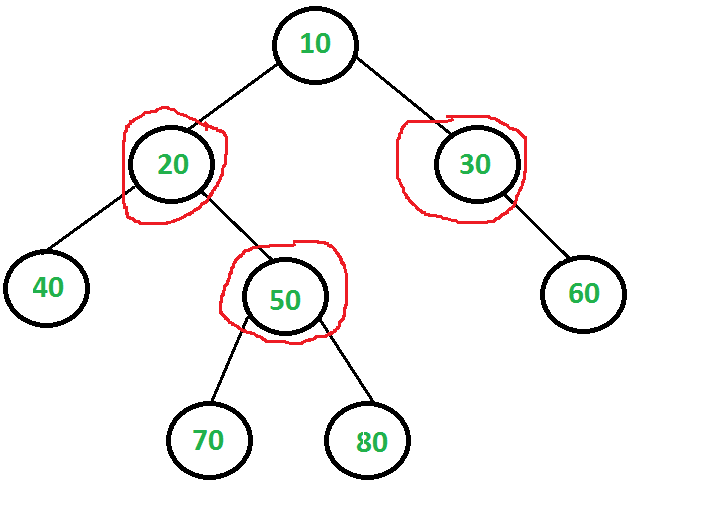https://www.spoj.com/problems/PT07X/
https://www.geeksforgeeks.org/vertex-cover-problem-set-2-dynamic-programming-solution-tree/
You are given an unweighted, undirected tree. Write a program to find a vertex set of minimum size in this tree such that each edge has as least one of its end-points in that set.
Input
The first line of the input file contains one integer N --- number of nodes in the tree (0 < N <= 100000). Next N-1 lines contain N-1 edges of that tree --- Each line contains a pair (u, v) means there is an edge between node u and node v (1 <= u,v <= N).
Output
Print number of nodes in the satisfied vertex set on one line.
Example 1
Input: 3 1 2 1 3 Output: 1 Explanation: The set can be {1}
Example 2
Input: 3 1 2 2 3 Output: 1 Explanation: The set can be {2}
A vertex cover of an undirected graph is a subset of its vertices such that for every edge (u, v) of the graph, either ‘u’ or ‘v’ is in vertex cover. Although the name is Vertex Cover, the set covers all edges of the given graph.
The problem to find minimum size vertex cover of a graph is NP complete. But it can be solved in polynomial time for trees. In this post a solution for Binary Tree is discussed. The same solution can be extended for n-ary trees.
The problem to find minimum size vertex cover of a graph is NP complete. But it can be solved in polynomial time for trees. In this post a solution for Binary Tree is discussed. The same solution can be extended for n-ary trees.
1) Root is part of vertex cover: In this case root covers all children edges. We recursively calculate size of vertex covers for left and right subtrees and add 1 to the result (for root).
2) Root is not part of vertex cover: In this case, both children of root must be included in vertex cover to cover all root to children edges. We recursively calculate size of vertex covers of all grandchildren and number of children to the result (for two children of root).
#define min(a,b) (((a)<(b))?(a):(b))
#define rep(i,n) for(i=0;i<(n);i++)
#define MAXN 100000
vector<int> adj[MAXN+2];
int n;
int dp[MAXN+2][2];
int go(int cur, int parent, bool isParentCovered) {
if(dp[cur][isParentCovered] != -1) return dp[cur][isParentCovered];
int &ret = dp[cur][isParentCovered];
ret = 0;
int i, r;
if(isParentCovered) {
rep(i, adj[cur].size()) if(adj[cur][i] != parent) {
ret += go(adj[cur][i], cur, false);
}
r = 1;
rep(i, adj[cur].size()) if(adj[cur][i] != parent) {
r += go(adj[cur][i], cur, true) ;
}
ret = min(ret, r);
}
else {
ret = 1;
rep(i, adj[cur].size()) if(adj[cur][i] != parent) {
ret += go(adj[cur][i], cur, true) ;
}
}
return ret;
}
int main() {
int i,u,v;
int r1,r2;
while(scanf(" %d",&n) == 1) {
for(i=1;i<=n;i++) adj[i].clear();
for(i=1;i<n;i++) {
scanf(" %d %d",&u,&v);
adj[u].push_back(v);
adj[v].push_back(u);
}
memset(dp,-1,sizeof(dp));
r1 = 1;
rep(i,adj[1].size()) r1 += go(adj[1][i], 1, true);
r2 = 0;
rep(i, adj[1].size()) r2 += go(adj[1][i], 1, false);
printf("%d\n",min(r1,r2));
}
return 0;
}
Time complexity of the above naive recursive approach is exponential. It should be noted that the above function computes the same subproblems again and again. For example, vCover of node with value 50 is evaluated twice as 50 is grandchild of 10 and child of 20.
